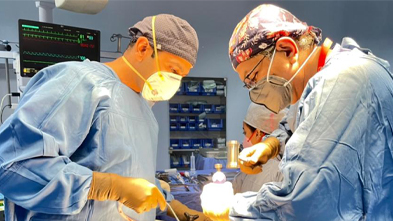When there are no complications, the recovery from this surgery is quite fast. Usually, the patient is standing and walking the day after surgery. If the pain is controlled sufficiently with oral medication, the patient may be discharged to return home 1 or 2 days after the surgery.
During the first 4/6 weeks post-surgery, the patient should take it easy. This means he can and should take short walks of 5-15 minutes several times a day, but must avoid bending over forwards, carrying weight, physical exercise, and should not yet return to work.
About 7 to 10 days after the operation, the patient will see a member of the nursing staff at New Delhi Spine to check how the surgical wound is healing and to have the stitches or staples removed from the suture.
Between 4 and 6 weeks after surgery, the patient will have a follow-up visit with a neurosurgeon who will assess his general condition and clinical evolution. If everything is going well, the patient can gradually return to his usual activities 6 weeks after the operation. At 10 to 12 weeks after surgery, if there are no contraindications, the patient can gradually start doing physical activity and exercise. Lumbar laminectomy surgery for spinal stenosis in Delhi, India.
At the beginning of the return to physical activity, we recommend avoiding impact or contact sports, or activity that involves flexing and twisting. Then, later on, the patient can gradually return to whatever physical and exercise activity they like, because with this kind of surgery, there is no loss of physiological mobility.
All this means that, it would be good to start with activities like elliptical or stationary bike, swimming, Nordic walking, etc., and leave sports such as tennis, paddle tennis, soccer and golf for later on.
Remember, that as a general recommendation, even if you have not had surgery, it is very important to warm up before and stretch after doing any exercise.
Although the use of a lumbar support is not mandatory after this surgery, it can be worn during the first two weeks after the operation to facilitate tissue healing. Later, it can be used in case of physical activity or going in any means of transportation.



